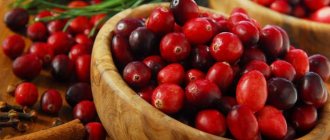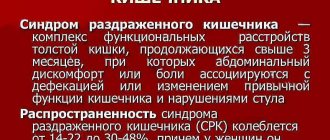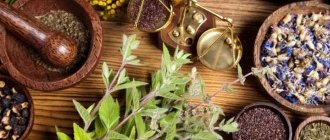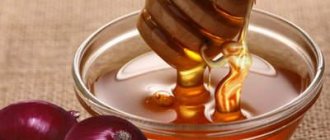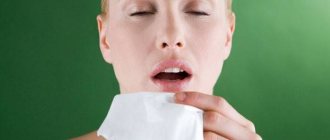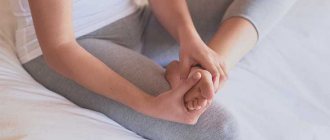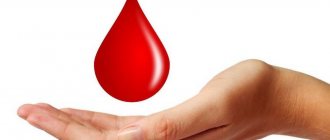If a woman has problems with the onset of ovulation or it is completely absent, then it is very difficult for such a woman to conceive and bear a child. In medical practice, to eliminate this problem, stimulation of ovulation using hormonal agents is used.
But not every woman wants to immediately start taking medications, which can cause disruptions and complications in the body. To begin with, a woman should try to stimulate ovulation through simple and safe folk remedies. How can you restore ovulation and get pregnant?
How does stimulation help?
Is it possible to restore ovulation and get pregnant? Doctors prescribe ovulation stimulation only if there are direct indications for it, since if a woman’s reproductive system is in normal condition, then she independently produces eggs that are ready for fertilization.
Ovulation in a woman of childbearing age who has no health problems is the process of the release of an egg that is mature and ready for fertilization from the follicle. The release of the egg is preceded by a long preparation. Once a month, several dormant eggs are activated under the influence of hormones and begin to increase significantly. Already after 10 days, a dominant follicle with a size of 15 to 20 mm emerges from them.
After the egg is fully mature, the follicle membrane begins to deteriorate. In this case, the egg is released into the abdominal cavity, and then passes into the fallopian tube. She continues to stay in this place for 24 hours, waiting for fertilization. If for some reason this does not happen, the egg dies and is excreted from the body along with menstruation. This natural process is repeated every month. Most often, only one egg takes part in ovulation, but in some cases there may be more. At the same time, the woman gives birth to twins.
In some women of childbearing age, who are ready to become a mother both mentally and physically, conception does not occur due to the fact that their ovaries do not form a full-fledged egg. If fertilization does not occur within 6 cycles, then the doctor may prescribe the woman to undergo ovulation stimulation.
The main goal of this procedure is to help the body form a whole egg ready for fertilization and push it to exit the follicle. The principle of operation of this method is aimed at influencing the ovaries of certain medications in order to enhance the production of hormones that are so important for the ovulation process.
Stimulation of ovulation for fertilization is prescribed by the treating specialist if a woman has:
- anovulatory infertility: polycystic ovary syndrome, hormonal problems that cannot be treated with simple methods, excess or, conversely, underweight in the patient;
- Artificial insemination through IVF will soon be carried out;
- infertility of unknown origin.
Standard home methods for stimulating ovulation
A woman's reproductive function depends on the balance of hormones in the body. When their production is slow, the egg does not mature and does not enter the fallopian tube. Therefore, conception is unlikely.
There are several ways to stimulate ovulation at home. But before doing this, it is recommended to undergo a medical examination to eliminate the risk of adverse health consequences.
Herbs
In folk medicine, herbal infusions and decoctions are used to normalize reproductive function.
To restore cyclicity, you can prepare a medicine from sage, plantain, aloe, rose and boron uterus.
Sage. Contains phytoestrogens, which are similar in structure to female sex hormones. Regular use of sage decoction helps to increase the tone of the uterus and resume the production of sex hormones.
In ancient Egypt, sage was used to treat infertility.
It is advisable to use it to support follicle growth. Recipe for making an infusion from this plant:
- 1 spoon of dried sage flowers is poured into 200 ml of boiling water.
- Infusion time is 30 minutes.
- The infusion is filtered and taken before meals 2-3 times a day for 2 weeks.
Plantain. To prepare a healing decoction, you need to pour boiling water over 30 g of plantain seeds and leave for 1 hour. Next, the decoction is filtered and taken daily for 3 weeks.
Aloe. It is recommended to prepare medicine from the young leaves of this plant. Before squeezing aloe juice, it must be cooled for 2 days. The simplest option is to put the plant in the refrigerator. On the third day, use a press to squeeze the juice out of it. Mix it with honey. Heat the milk and add 1 spoon of this mixture to it. Use aloe vera medicine daily for 10 days.
Rose. The petals of this flower are often used to support fertility. You need to make a pink decoction. To do this, the plant petals need to be boiled in a saucepan over low heat. Infusion time is 10 minutes. The decoction is taken daily for a month.
Borovaya uterus. This plant is recommended to be used to prepare an ovulation-stimulating decoction in case of insufficient progesterone production in the body. To prepare 1 serving of the medicine, you need to pour boiling water over 1 spoon of the plant and leave for 30 minutes. Take for 3-4 days in the middle of the monthly cycle.
Carrying out diagnostics
Before restoring ovulation, the doctor must prescribe the patient a variety of examinations, both laboratory and instrumental.
The main purpose of their implementation is to determine the main contraindications to the procedure:
- problems with the hormonal system;
- the process of inflammation of the ovaries and pelvic organs;
- problems with the patency of the fallopian tubes.
The main contraindication for carrying out restoration measures is the age of a woman over 35 years old, since in this case the risk of giving birth to a child with developmental anomalies and diseases increases significantly.
Carrying out instrumental research:
- examination by a therapist, who helps determine the presence of diseases during which bearing a child is prohibited;
- ECG;
- Ultrasound of the pelvis or breast;
- examination of the patency of the fallopian tubes using laparoscopy or fluoroscopy with contrast agents;
- folliculometry.
Laboratory examinations
Basic laboratory tests include:
- antibodies to HIV;
- RW (treponema pallidum antigens);
- conducting cultures to detect candidiasis and trichomoniasis;
- PCR – taking a smear from the genital tract to determine mycoplasmosis, gardnerella and ureaplasmosis;
- examination of smears taken from the cervical canal for atypical cells;
- detection of antibodies to rubella, chlamydia, toxoplasmosis;
- determination of the amount of female hormones, thyroid hormones, testosterone and prolactin in the blood (done many times).
After conducting a comprehensive study and obtaining a conclusion about the absence of diseases that may prevent the fertilization of an egg or lead to the birth of a child with a disease, it is important to assess the ovarian reserve. This examination helps determine:
- the chance of getting a good effect during ovulation stimulation;
- intensity of stimulation;
- which stimulation method is best to choose;
- what drugs should be selected for stimulation, as well as what dose should be used.
To determine the state of the ovarian reserve, a woman needs to have her blood tested after taking hormonal medications. After receiving the results of the study, the doctor accurately determines whether artificial stimulation should be performed.
Hyperovulation method
Which stimulation method should I choose? Stimulation of ovulation can be carried out using different methods, which detail the regimen, dose and duration of therapy. The doctor chooses the research method, taking into account the following factors:
- the result of assessing the ovarian reserve;
- woman's weight;
- the effect of previously performed stimulations (if there were any).
All medications used at the time of stimulation are classified as hormonal, but they differ from each other in the type of hormone on the basis of which they were produced. Luteinizing or follicle-stimulating agents are used to preserve the functions of the egg and its accelerated development. Ovulation has disappeared - how to restore it?
Experts identify the following main methods of stimulating ovulation:
- HMG-based products, which include FSH and LH hormones in equal quantities. These include “Pergonal”, “Menopur”, “Menogan”.
- Preparations containing FSH: the principle of operation of such hormones is very close to the natural process.
- Drugs whose action is based on reducing the amount of estrogen and increasing FSH to the required amount.
- Hormonal drugs that help quickly rupture the follicle membrane and ensure rapid release of the egg.
Most often, when preparing treatment, doctors prescribe combined stimulation.
Features of stimulating ovulation using traditional methods
To restore reproductive function, hormones contained not only in synthetic drugs, but also in herbs, roots and essential oils are used as a replacement for sex hormones. For some women who have contraindications for the use of drug therapy, this is a real panacea. But there are some nuances here too:
- Decoctions and infusions of medicinal herbs should not be taken in parallel with other prescribed hormonal medications.
- The course of treatment with folk remedies is long - at least 3 months.
- Systematic monitoring of hormone levels and egg growth is necessary.
- Herbal medicine can be used for no more than 3 courses in a row.
- To maximize the preservation of medicinal properties, it is necessary to pour infusions not with boiling water, but with hot water 70-80 C.
As with standard drug stimulation, a woman treated with folk remedies must take tests on the appointed days to monitor her hormonal levels and come for an ultrasound.
Stimulating ovulation at home using folk remedies occurs in stages:
- The formation of follicles is stimulated by sage.
- Elderberry blossom is used to mature the dominant follicle.
- To help a fully mature follicle rupture and release an egg, plantain seeds and rosemary are needed.
If after all these measures pregnancy occurs, herbs are needed to stabilize hormonal levels, normal functioning of the corpus luteum and prepare the endometrium for egg implantation. For these purposes, in the second half of the menstrual cycle, a boron uterus, a red brush and a cuff are most often used.
Time spending
It is recommended to stimulate ovulation no more than 6 times, as it can provoke ovarian depletion. If, as a result of the procedures performed, the desired fertilization does not occur, then the attending physician chooses another method of therapy.
Treatment stimulation during basic IVF can last in different ways:
- ultra-short stimulation – lasts from 8 to 10 days;
- short - only 10 to 12 days;
- long – lasts from 21 to 28 days;
- super-long procedure - stimulants are used for several months, most often prescribed for advanced forms of endometriosis.
Principle of the procedure
Stimulation of ovulation is carried out under the strict supervision of the attending physician, since regular monitoring of the condition of the ovaries and control of possible adverse reactions is very important.
Stimulation of ovulation during a long procedure includes the following steps:
- Blockade of the pituitary gland using agonists or antagonists. The procedure is prescribed on days 20-25 of the cycle and lasts about 17 days.
- Stimulation of the ovaries using gonadotropin products lasts for 12-17 days.
- A stimulating injection is given 24-36 hours after stopping the use of medications.
- Maintenance of the corpus luteum of the ovaries with injections or progesterone.
The short stimulation coincides with the time of the woman's monthly cycle. It begins 2-5 days after the start of menstruation and lasts about 17 days. The stimulation process is carried out in conjunction with suppression of the pituitary gland. There are several methods of stimulation with gonadotropins: with agonists and antagonists. Stimulation through antagonists is more effective and safe, since the risk of sudden ovulation in this case is very small.
When conducting stimulation throughout its entire duration, it is very important to perform ultrasound monitoring.
Since the drugs used to stimulate ovulation are usually hormonal, some women may experience the following problems during therapy:
- excessive sweating;
- sleep problems;
- severe pain in the lower abdomen, lower back and ovaries;
- hot flash;
- headache;
- severe bloating;
- severe anxiety, stress, fatigue.
However, many women say that they do not experience any unpleasant symptoms during stimulation.
What oils are used
In order to stimulate ovulation with means “from the people”, you can also use aroma oils. This method of treatment is also considered quite effective. By inhaling the aroma of herbs such as sage or basil, cypress or anise, it is possible to achieve the correct production of female sex hormones.
To regulate hormonal levels, baths are also used, which require the addition of a few drops (from three to five) of the oil of a flower such as rose geranium. Lavender also helps. Doctors recommend self-massage of the abdomen. Oils from rose, neroli (orange blossom oil), jasmine and sandalwood are suitable for this.
Massages should begin on the fourth day of the menstrual cycle and last for ten days. For greater efficiency, oils are either alternated or combined.
Effect of therapy
The effectiveness of the procedure will directly depend on several features. These include:
- reasons for lack of ovulation;
- woman's age;
- the type of medicine used;
- the presence of problems that can lead to infertility.
In general, when ovulation is properly stimulated, in 75% of cases the egg matures and is released ready for fertilization. But in 15% of women, the desired conception occurs the first time. For the rest, doctors prescribe two or three cycles. How to restore ovulation? Reviews of stimulation-related procedures are mostly positive.
Folk remedies
Chronic problems with ovulation require urgent treatment, as otherwise they can cause infertility. Stimulation of egg cell maturation can be carried out using conservative methods. How to restore ovulation using folk remedies? This method is considered quite safe, so today many women use this method to improve the health of the reproductive system:
- Sage is a good helper for a woman’s hormonal system. Prepare a decoction using the following method: take 250 milliliters of hot water and a spoonful of sage. The mixture is infused for 20 minutes. The product is taken 60 ml 3 times a day, starting from the 7th day of the menstrual cycle. Taking the decoction lasts 10 days for 2 months. Afterwards they take a break for three months and repeat the course again, but from the 4th day of the cycle.
- How to restore ovulation using folk remedies? To restore ovulation, it is recommended to take a decoction of plantain seed with linden blossom. To prepare it, the two components are mixed in equal proportions. Then pour one spoonful of the dry mixture with hot water and continue to cook in a steam bath for 15 minutes. The product is taken 1 tablespoon 4 times a day.
- A good effect in restoring ovulation can be achieved by using Adam's root tincture. It is prepared according to the following scheme: take 1 tablespoon of plant material for 1 tea cup, pour the product with hot water and infuse for 2.5 hours under the lid. Take the strained decoction 2 tablespoons three times a day for 3 months.
Reviews on how to restore ovulation using folk remedies during stimulation are quite ambiguous. It is important to remember that with an overdose of sage, there is a high risk of getting mastopathy (due to a violation of the amount of hormones in the body). You need to take any traditional medicines to restore ovulation very carefully.
Other methods of traditional medicine
Stimulating ovulation with folk remedies is not complete without the use of such unconventional methods as therapeutic mud, baths, essential oils and a number of others.
Mud to stimulate ovulation
Treatment with mud is indicated in cases where the lack of ovulation is associated with the presence of inflammatory diseases of the pelvic organs. Mud stops the inflammatory process and helps restore the functions of the female genital organs.
Mud can be purchased at a pharmacy or on specialized websites in the form of a ready-made composition. You just need to warm it up a little and apply it like a cream on the stomach, in the area where the ovaries are located. The duration of this procedure is no more than half an hour. Then the dirt should be removed with a napkin or washed off with warm water. After the procedure, it is advisable to stay warm, as it produces a warming effect.
Baths
Healing baths can be taken with the already mentioned plantain, but you will need not seeds, but leaves and roots. You need to prepare a decoction of them and add it to the bath. Procedure time – 10 minutes.
Laminaria is good for restoring ovulation - you just need to soak it and add it to the bathing water.
Taking baths during menstruation and pregnancy is prohibited.
Essential oils
To support ovulation, you can use essential oils as aromatherapy or add them to baths. Lavender, sage, cypress, basil, anise and rose have a beneficial effect on the production of female hormones.
Vitamins
In addition to the above remedies, you can and even need to take vitamins. Vitamins E, C, B have a positive effect on the ovulation process.
They must be taken according to the schedule on different days of the cycle. So, you need to start from the 5th day of the cycle, after the end of menstruation, with vitamin B. From the 15th day of the cycle, take vitamin C, and from the 25th until the start of the next menstruation - E.
Specific dosages and duration of administration are determined by the doctor individually.
Diet
For women's health, restoration of reproductive functions and for conception, there is a list of products that stimulate ovulation.
These include fatty dairy products, hard cheese, eggs, legumes, sprouted wheat sprouts, flaxseed oil, vegetables - carrots, cucumbers, tomatoes, fruits - apples, quince and pomegranate.
Unfavorable for conception are pears, figs, rice and cabbage.
Treatment for polycystic disease
How to restore ovulation with polycystic ovary syndrome? To begin with, the doctor prescribes an ultrasound and a blood test for hormones. If the diagnosis is confirmed, then the specialist prepares long-term and effective treatment. The course of therapy will consist of restoring the menstrual cycle, and if it is disrupted, normalizing the amount of hormones, weight correction, and after infertility treatment.
Restoring ovulation includes the following steps:
- the use of hormone substitutes from the 5th to the 9th week, which helps stimulate follicle growth;
- monitoring the formation of follicles using ultrasound;
- when the follicle reaches the desired size, an hCG injection is given to begin the ovulation process and facilitate the release of the germ cell;
- for successful fertilization, experts advise having sexual intercourse on the day of the injection and the day after;
- from the 17th day, the second phase of recovery begins - the replacement of progesterone, which is important for preserving the conception that has already occurred;
- additional ultrasound, which is performed on the 17-18th day, to accurately determine the cell yield.
When carrying out such procedures, the amount of hormones in the body increases significantly, which provokes the rupture of several follicles. As a result, this leads to the fertilization of several cells. At the same time, the woman gives birth to twins.
The feasibility of stimulating ovulation using traditional methods
In printed literature and the Internet you can find a lot of information about ways to combat infertility using folk remedies, which were practiced by our grandmothers and great-grandmothers even before the development of modern reproductive techniques. Treatment was based on the use of various herbal infusions, special massage and the use of therapeutic mud, but it did not take into account the causes of infertility itself.
Nowadays, traditional medicine also offers aroma baths, massage using essential oils, and taking vitamins E and C or general multivitamin complexes as ovulation stimulants. Some of the plants actually contain hormones similar to those produced by the female body, but how they affect the ovulation process has not been fully studied. Research into the use of folk remedies to stimulate ovulation has not been carried out; accordingly, the dosage of various decoctions and infusions was determined “by eye”.
The effectiveness of folk remedies is most often associated with chance: for example, when treatment leads to successful conception in the initial absence of problems with the ovaries.
An ultrasound is used to diagnose that a woman has polycystic ovaries, although in fact they are multifocal, which are a normal variant on days 5-7 of the menstrual cycle and have an echographic resemblance to the first, pathological variant. Sometimes this picture is mistaken for polycystic ovary syndrome, although it is not a direct cause of infertility. The final diagnosis is determined by the doctor only after additional research on the content of gonadotropic hormones, insulin and testosterone in the patient’s blood.
If you nevertheless decide to stimulate ovulation with folk remedies instead of traditional drugs, be sure to consult with a doctor experienced in these matters. Only after a comprehensive examination will he develop an individual treatment program for you with control dates.
Elimination of follicular cyst
If a follicular cyst occurs, how to restore ovulation? Treatment of this pathology will be carried out with the help of medications. In this case, the doctor prescribes non-steroidal anti-inflammatory drugs, and, if indicated, hormonal drugs. Most often, a follicular cyst resolves on its own after 1-3 menstrual cycles. After this, the woman should regularly visit the gynecologist for 3 months.
If treatment with a conservative method does not give the desired result, then a planned laparoscopy and enucleation of the cyst is performed. At the same time, the doctor tries to preserve as much healthy tissue as possible.
If any complications suddenly appear during treatment, then urgent surgery is necessary. Before starting it, the patient should adhere to bed rest, and also put cold on her stomach from time to time.
A laparoscopic approach is used, during which instruments and a video camera are inserted into the woman’s abdominal cavity through a small puncture in the abdominal wall. If healthy ovarian tissue is present, the cyst is removed. If there are a large number of formations, intra-abdominal bleeding, torsion of the cyst stalk, or during menopause, it may be necessary to remove the ovary.
Treatment after surgery is aimed at rehabilitation and normalization of ovarian function. For this purpose, vitamin supplements and oral contraceptives are used. The prognosis of the disease is positive. Most often, the disease can be effectively treated, but relapses are not excluded.
Complications of ovulation stimulation
Artificial stimulation of ovulation can not only help, but also harm. Possible negative consequences include:
- enlarged ovaries;
- bloating;
- sudden mood swings;
- headache;
- paroxysmal hot flashes;
- multiple pregnancy (but not more than 10% of cases);
- intrauterine fetal death (rarely), especially with multiple births;
- spontaneous miscarriage;
- early birth;
- tubal pregnancy;
- development of ovarian hyperstimulation syndrome.
Ovarian hyperstimulation syndrome is a pathological reaction of the female body to specific hormonal treatment before or after IVF. It can be either early or late: the first is observed already 2–4 days from the start of induction, the second - at 5–12 weeks of pregnancy (late syndrome occurs in a more severe form).
Ovarian hyperstimulation syndrome has three degrees of gradation - mild, moderate and severe. Their differences are based on the patient's complaints. Only with severe hyperstimulation is hospitalization of the patient indicated.
The main signs of ovarian hyperstimulation syndrome are:
- discomfort;
- heaviness and pain in the abdomen;
- repeated vomiting;
- diarrhea;
- swelling of the limbs, face and anterior abdominal wall;
- ascites (accumulation of free fluid in the abdominal cavity);
- hydrothorax (accumulation of non-inflammatory fluid in the pleural cavity);
- decreased blood pressure (increased fatigue and lethargy, darkening of the eyes, frequent shortness of breath, feeling of coldness in the arms and legs), etc.
Doctors note that within the framework of various IVF programs, specialists always prevent the development of ovarian hyperstimulation syndrome. And as a result, this disease occurs only in 3–5% of cases.
